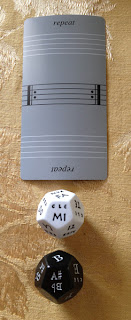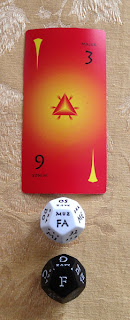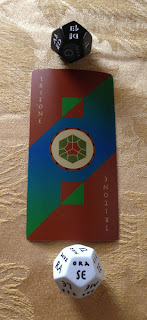A Serbian translation of this post is available below.
The full moon in November – the “Beaver Moon” in North America – rises this year in Taurus on Sunday the 17th, while the Sun is in Scorpio. The name originated among the Algonquin peoples of the North Atlantic coast, marking either a time to set beaver traps for winter fur or a time when beavers build their winter dams.
The Full Moon in Taurus illuminates a need for security and stability; that it occurs while the Sun is in Scorpio speaks of what we must relinquish in order to serve that end. How do we go about filling this need?
click for larger image
The keycenter of the casting is B Descending, indicating higher wisdom coming down into us through the crown chakra. The first scalepoint that appears is do descending, the point of Inception, with a Conductor of Strings below: a time beginning when the heart leads. The second position is the axis of the casting, and so its central focus; here we find the scalepoint of te ascending, of Effort Required, with diminuendo crossed by a Major Triad of Strings above. Together, these first and second positions speak of conducting our affairs with a soft heart. It is from this softening, this diminuendo, this gentle opening to our deepest heart and the hearts of those around us, that we find both emotional fulfillment and the security and stability we seek: we become grounded through love, not through grasping or clinging.
Fulfilling as it is when we come to such a place of connectedness, there is a tendency to want to exit quickly, to hurry back to our comfy cocoons, to our self-absorbed dramas and notions of self-control. The third position – ra ascending with fermata above – speaks to this. “Fermata” means “hold that note till the conductor says otherwise.” The broad challenge here is not just to experience a moment of connectedness, assume we’re enlightened, then move on – it’s to hold the heart open, even as what’s in front of us shifts.
The fourth position, so with Ossia below, indicates finding vitality in taking the path less traveled. That path might be the scary one – if it involves ditching what is no longer of service, take it.
The fifth position, ti with a Major Triad of Voices below, speaks of a blossoming spiritual fulfillment. Musically, this triad is a half-step higher than the Major Triad of Strings found in the second position. The emotional fulfillment found in softness blooms as spiritual fulfillment in the broader context of our lives as a whole. Lovely.
The sixth and final position is under mi, the point of Opportunity. The moon sets, the Scorpio Sun rises, and we find the sickle of the culling card: Editing. This relates to the path choice in position 4: softening our hearts, we see what is no longer needed – and gently cut it loose.
--
Pod Dabrovim mesecom
Stabilnost i sigurnost počinju u srcu, ljubavlju ka prijateljima i porodici i u svakodnevnim postupcima ljubaznosti.
Pun mesec u novembru, u Severnoj Americi znan i kao "Dabrov mesec", naći će se ove godine u znaku Bika i to u nedelju, sedamnaestog novembra, dok je u isto vreme Sunce u znaku Škorpije. Naziv "Dabrov mesec" potiče od nekoliko plemena, grupno nazvanih Algonkvin, a koja nastanjuju severnu pacifičku obalu i označava, ili doba godine kada je vreme za postavljanje zamki za dabrove kako bi se nabavilo krzno za nadolazeću zimu, ili doba kada dabrovi grade svoje brane na rekama.
Pun mesec u Biku osvetljava našu potrebu za bezbednošću i stabilnošću, dok nam u isto vreme Sunce u Škorpiji govori šta je to čega se moramo odreći kako bismo imali i jedno i drugo. Kako postupiti da bismo ispunili ovu potrebu?
"Keycenter" (početak) ovog otvaranja je "silazno B" i označava neku višu mudrost koja silazi u nas i to kroz Krunsku čakru (na temenu glave). Prva notna skala koja se pojavljuje je silazno do, tj. polazna tačka, sa "Conductor of Strings" kartom ispod: početak je vremena onda kada sledimo svoje srce. Druga pozicija je srž otvaranja, a samim tim i pozicija fokusa. Ovde nalazimo notnu skalu uzlaznog te, tj. neophodnog napora i zalaganja sa diminuendo kartom preko koje se našla Major Triad of Strings karta. Zajedno, prva i druga pozicija, govore o obavljanju svakodnevnih aktivnosti otvorenog srca. U toj otvorenosti, tom diminuendo-u i nežnosti ka sopstvenom i srcima ljudi oko nas, nalazimo emocionalnu ispunjenost, sigurnost i stabilnost za kojom tragamo: ljubav nam donosi prizemnost kroz davanje, a ne kroz grabežljivost i posesivnost.
Čak i u ispunjenosti, takvoj kakva jeste, kada dosegnemo takav nivo povezanosti, postoji tendencija brzog bega nazad u našu udobnu čauru, sopstvene drame i ideje o samokontroli. Treća pozicija, uzlazno ra sa kartom fermata iznad, upravo govori o tome. "Fermata" znači "zadržavati odredjenu notu dok dirigent ne pokaže drugačije". Ovde nije izazov samo doživeti taj trenutak povezanosti, već nastavljati dalje, zadržati otvoreno srce i tad kada se stvari pred nama menjaju.
Četvrta pozicija, so, sa kartom Ossia ispod, indicira nalaženje vitalnosti u koračanju putem kojim se ređe ide. Put bi mogao biti zastrašujuć: i ako zahteva odbacivanje onoga što nam više nije od koristi, krenite njime.
Peta pozicija, nota ti (si) sa kartom Major Triad of Voices ispod, govori o procvatu duhovne ispunjenosti. Muzički gledano, ova trijada (glasova) je za pola "koraka" viša nego trijada žičanih instrumenata u molu koju ovde imamo u drugoj poziciji. Dakle, emocionalna ispunjenost se razgranava i širi i u ostale sfere našega života. Divno.
Šesta i ujedno poslednja pozicija u ovom otvaranju, donosi nam notu mi, a koja označava priliku! Mesec zalazi, sunce se rađa, a mi kao poslednju sliku ovog otvaranja imamo srp i to na karti Editing (redigovanje, korigovanje, montiranje). Ovo je svakako povezano s izborom puta (pozicija četiri): otvarajući svoja srca, spoznajemo stvari koje nam više nisu potrebne i s osmehom ih ostavljamo iza sebe.



































